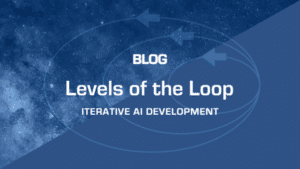
Introduction
The classification and ranking of “buyer intent” has increasingly utilized data science and AI/ML techniques to enhance the accuracy of those intent signals. Now, with Jaxon’s incorporation of knowledge graphs and natural language processing, Intent is moving into its next generation of precise, intent signal interpretation.
Large language models like GPT-4 have been instrumental in enhancing the accuracy and reliability of NLP tasks like intent classification and propensity modeling. In this post we will discuss how Jaxon envisions GPT-4 improving these models, and how incorporating knowledge graphs can take their performance to the next level of accuracy.
Enhancing Intent Classification with GPT-4
Intent classification is the crucial task of understanding the underlying purpose of a user’s input into applications like chatbots, voice assistants, and customer support systems. GPT-4, with its vast knowledge and advanced NLP capabilities, can significantly improve intent classification models in the following ways:
- Improved Context Understanding: GPT-4 uses pre-trained knowledge to better understand the nuances of user input that might be missed by traditional ML models, leading to more accurate intent classification.
- Handling Ambiguity: GPT-4’s ability to understand ambiguous or vague language can help in more accurately classifying user intent when the input is unclear or has multiple interpretations.
- Enhanced Generalization: GPT-4’s pre-training on diverse data allows it to generalize better to new or unseen inputs, improving the model’s performance in real-world scenarios.
Incorporating Knowledge Graphs for Better Propensity Modeling
Propensity modeling is the process of predicting a user’s likelihood to take a specific action or make a certain decision. In marketing and sales, propensity models are often used to predict customer behavior, such as purchase intent or churn likelihood. Integrating knowledge graphs into propensity ML models can bring the following advantages:
- Contextual Enrichment: Knowledge graphs provide a structured representation of relationships between various entities and concepts. By incorporating this rich information source, ML models can gain a deeper understanding of the context, leading to more accurate propensity predictions.
- Feature Engineering: Knowledge graphs can be used to generate valuable features for propensity models, such as user preferences, historical behaviors, and demographics, which can improve the model’s predictive performance.
- Real-time Updates: As knowledge graphs are dynamically updated with new information, ML models can leverage this constantly evolving knowledge base to make more accurate and timely propensity predictions.
Conclusion
Combining the power of large language models like GPT-4 with knowledge graphs can significantly enhance the accuracy and trustworthiness of intent classification and propensity machine learning models. This synergy enables businesses to better understand their customers’ needs and preferences, leading to more personalized and effective communication and marketing strategies. As advancements in NLP and ML continue to unfold, leveraging these cutting-edge technologies will be essential for organizations seeking to stay ahead of the curve and deliver exceptional customer experiences.


